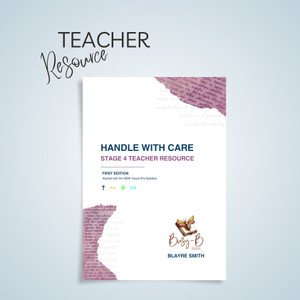
Handle with Care is an engaging and versatile teacher resource that integrates reflective practice with practical classroom strategies, supporting both the creative and academic growth of students. Designed to align with the NSW Visual Arts Syllabus, this resource explores the tension between public and private identity, equipping students to reflect on how they present themselves to the world versus who they are within.
Students engage with the contemporary artist Gillian Wearing, analysing how her practice explores themes of identity, self-expression, and concealment. Inspired by her work, students create their own cardboard letterbox sculptures as a symbolic representation of how they express themselves publicly versus privately.
Key Features:
-
Learning Intentions & Success Criteria: Each section includes clearly defined goals and criteria, ensuring that both teachers and students have a shared understanding of expected outcomes, supporting purposeful teaching and assessment.
-
Gradual Release of Responsibility: Lessons are structured through the I Do, We Do, You Do model, helping teachers scaffold learning and guide students towards independence with confidence.
-
Super Six Comprehension Strategies: Incorporated into artist case studies and written tasks to deepen understanding, strengthen literacy, and encourage critical and reflective engagement with identity.
-
TEEL Paragraph Frameworks: Supports students in expressing their ideas in clear, structured written form, fostering reflective practice and strong literacy development.
-
NESA Verbs Alignment: Tasks are deliberately framed with NESA verbs to ensure alignment with syllabus outcomes, enabling students to demonstrate skills at the correct depth and level of complexity.
-
Practical Classroom Application: Provides scaffolded activities from artist research through to sculpture creation, supporting both creative exploration and critical thinking around identity.
Designed for Stage 4 Visual Arts, Handle with Care offers a holistic approach that unites pedagogy, creativity, and reflective practice. It empowers educators to guide students in exploring who they are publicly and privately, while developing both artistic and academic skills.







